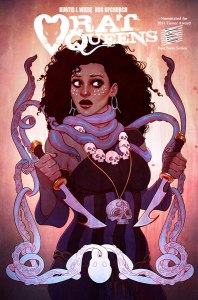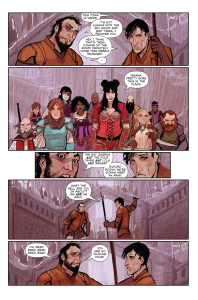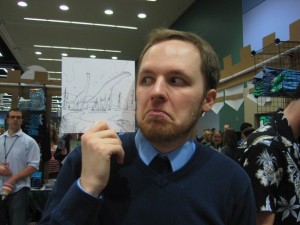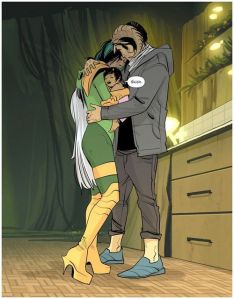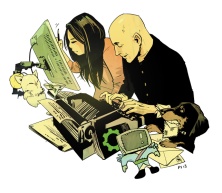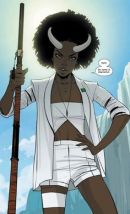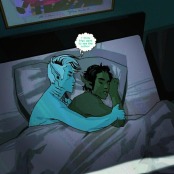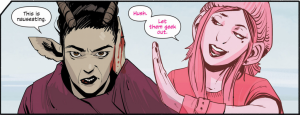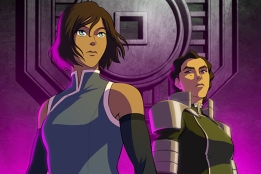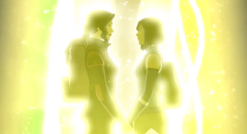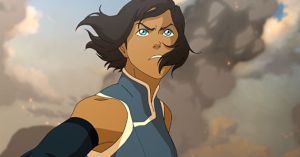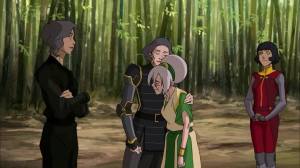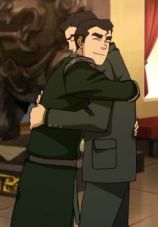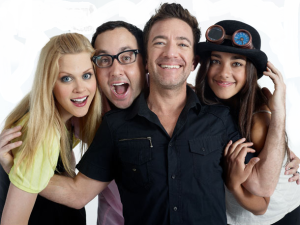Why eight questions? Because I had more than five and less than ten! Actually, there are more than eight because of grouping the questions by subject but – and you probably don’t care about any explanation I provide.
Moving on!
Over the summer I started reading more prose fiction to shake things up between comic book trades and I was fortunate to come across a spectacular, mostly coming-of-age, story of magic, music, and the harsh reality of growing up: Signal to Noise by Silvia Moreno-Garcia. Set in Mexico City and jumping between 1988 and 2009, Signal to Noise follows Mercedes “Meche” Vega who discovers her love of music, and the right vinyl, can cast magic spells. Roping in her friends Sebastian  and Daniela, the trio use magic to change their lives for the better, but the consequences of their actions result in a decades long estrangement.
and Daniela, the trio use magic to change their lives for the better, but the consequences of their actions result in a decades long estrangement.
The book comes highly recommended by io9’s Charlie Jane Anders and I couldn’t agree with her more. Signal to Noise is an intimate look at a young woman searching for a solid foundation, something she can believe in, trust in, but always comes up short. Meche’s exterior and interior turmoil makes for a complex and nuanced protagonist who is as frustrating as she is sympathetic.
In light of my new found book to gush over, I reached out to Silvia Moreno-Garcia and she was kind enough to answer several questions, via email, about Signal to Noise and her forth-coming anthology, She Walks in Shadows, which looks at the works of H.P. Lovecraft through his female characters – or lack thereof.
Maniacal Geek (MG): Though Signal to Noise is a coming-of-age story, the magical elements are secondary, acting more as a catalyst than being a consistently present force. Is this how you perceive the role of magic in urban fantasy or did it just serve this specific story?
Silvia Moreno-Garcia (SMG): For many Anglo writers and readers magic must work as a system, a kind of D&D system. I wanted to play with this notion, with how much you can systematize magic, versus the ‘magic’ which appears in Latin American fiction which works in a completely different matter. So that the result is this is not quite magic realism and not quite urban fantasy.
MG: Meche’s grandmother doesn’t mind telling stories about magic but she’s reluctant to use it and only does so to save Sebastian from Meche’s recklessness. In your opinion, is magic the folly of youth?
SMG: I leave it up to the reader to figure that out.
MG: Music is the connective tissue that keeps Meche tied to her father and becomes her means of casting spells. What is your relationship with music and how did it influence Signal to Noise?
SMG: My parents both worked in radio stations. That’s the kind of environment I grew up in. We had a lot of albums stacked around the house. I used my father’s professional tape recorder to make mixtapes. That kind of thing. My son now has a portable record player. My grandfather was also a radio announcer so the fear is it’s genetic.
MG: (Silly question alert!) Which album would be your object of power?
SMG: Josh Joplin’s Useful Music.
MG: Coming from a comic book background myself, there’s been an ongoing discussion about the flawed female protagonist, which Meche definitely fits. Were you worried that people might not be able to relate to Meche? Do we have to relate to a character like Meche? How do you feel Meche has grown as a character by the end of the book?
SMG: Ugh. Relatable, likeable characters, eh? There are so many famous characters in books you can’t relate to and the books do just fine. You have criminals like Tom Ripley and Dexter in multiple novels. And in the romance novel the brooding hero is a staple. I don’t find Heathcliff or Mr. Rochester to be relatable since I’m not a white billionaire living in the age of carriages. They’re not super likeable either, mad wife in attic and all. But women. Ah, we are much harder on women. Women better be fucking perfect and relatable.
Look, I’m Mexican, I grew up without a lot of the bells and whistles Americans take for granted. There’s not a lot of people I can relate to in books. Not Holden from Catcher in the Rye, not Bella in Twilight. So *I* can relate to Meche.
So no, I didn’t worry that Meche was likeable or relatable, although I’ve heard from many people that they can relate to her. If people find her interesting enough to follow her through the book I think that’s enough.
As to how she’s grown, I went to visit my friend who is now living in NY this year and I hadn’t been there in about 14 years. At one point he said something which sounds pretty accurate. He said: “Silvia, we are older but not more mature.” I’ll leave it at that.
MG: Do you believe Mexico has a greater cultural connection to magic? To music?
SMG: I grew up with a lot of folklore in my life and folk magic, but I believe this is unusual and certainly much more unusual for people younger than me. But you do see magic more openly, there is a witch’s market in Mexico City where you can buy ingredients, there was an “esoteric plaza” in a shopping mall near my home, and there’s the witches in Catemaco who are quite famous. Some people still might visit the curandero, the healer, or believe in the evil eye. Things like that. But the influence of Anglo culture is erasing a lot of that.
MG: You’ve edited several anthologies with horror themes with many specifically focused on H.P. Lovecraft’s mythos. What attracts you to Lovecraft and the horror genre? Do you have a favorite Lovecraft story?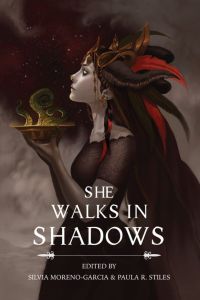
SMG: “The Colour out of Space.” My thesis work focuses on Lovecraft, eugenics and women so I’m interested in him on an academic level and at a visceral one. I like all kinds of genres and read indiscriminately, from cheap, old pulp crime novels to modern dramatic lit. As a writer, horror is just one tool I can employ. As a reader, I’ve always had a basic interest in terrible things.
MG: The latest anthology, She Walks in Shadows, explores Lovecraft through the feminine perspective and the explicit or ambiguously defined female characters. In your opinion does Lovecraft have an inherent feminist slant or did you see his writings as a challenge, something to meet head on for the anthology?
SMG: He barely has any women in his stories, so it’s a challenge. The writers are all showing a variety of visions of Lovecraftian characters, Weird fiction, and women. Women for Lovecraft exist as an absence, an unnamed presence, they are the lurking fear of his stories and we are bringing them to the forefront.
If you’d like to get your grubby mits on all of Silvia’s work currently available for purchase:
Signal to Noise: http://www.silviamoreno-garcia.com/blog/books/signal-to-noise/
Love and Other Poisons: http://www.silviamoreno-garcia.com/blog/bibliography/love-other-poisons/
You can also pre-order She Walks in Shadows and follow Silvia on Twitter!

